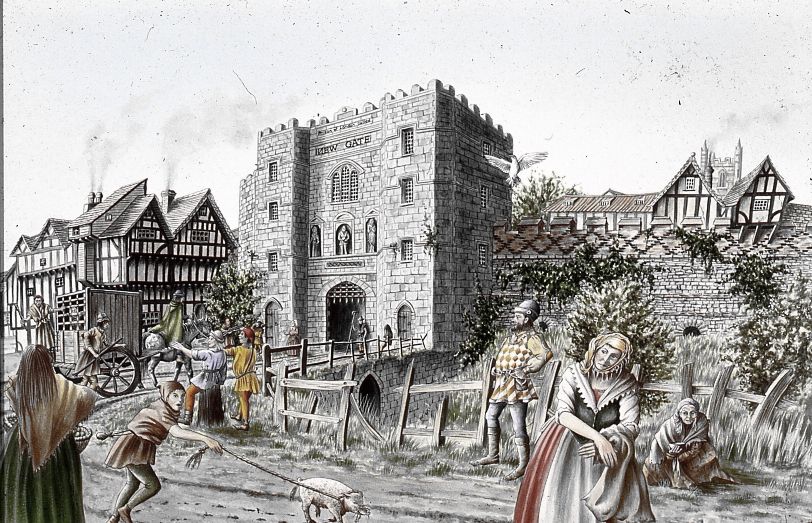Roman London – Literary & Archaeology Walk 6:30pm Wed 24th Sept 2025 To book
The Archaeology of London Walk 6.30pm Fri 3rd October 2025 To Book
Chaucer’s Medieval London Guided Walk 11:30pm Sat 4th Oct 25 To book
Jane Austen’s London Anniversary Walk 2.30pm Sat 4th Oct 25 To book
The Decline And Fall Of Roman London Walk 11.30pm Sat 8th Nov 25 To book
The Rebirth Of Saxon London Archaeology Walk 11.30am Sun 23rd Nov 2025 To Book
Charles I and the Civil War. Martyrdom Anniversary Walk Jan 30th 2026 To book
For a complete list of my guided walks for London Walks in 2025 look here
Bartlemas – Bartholomew Fair August 24th
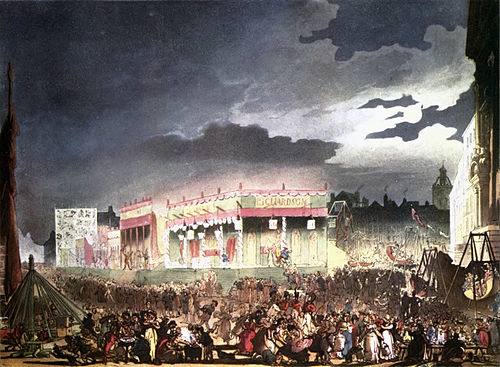
The Fair began in 1133 a few years after the foundation of St Bartholomew’s Priory 1123. Smithfield held a weekly livestock market. But on St Bartholomew’s Day they held an annual Fair. It was originally 3 days long but expanded to 2 weeks by 1753. It became the chief wool fair for England by 17th Century. But it was also rowdy and in 1691, it was reduced to 4 days, and suppressed in 1855.
Ben Jonson wrote a marvellous play called Bartholmew Fair first performed in 1614 at the Hope Theatre on Bankside. In it, he portrays the characters who attended the Fair. There is a ballad singer who sings & sells printed ballad sheets. He spots where his customers keep their money purses. And signals to an accomplice cutpurse who steals the money. Then there is the horse-seller who cheats his customers with his tricks which make an old nag seem like a frisking colt. The Ale Wife in the beer tent froths up the beer, to short measure the beer drinkers, then whips away the beer pot before all the ale is finished, reselling the dregs. There is an absurd Puritan, pompous Citizens, a puppet show, the pig with two pizzles, and other freak shows.
Malfactors at the Fair could expect punishment at the Pie Powder Court, which was held in Cloth Fair at the Hand and Shears which is still a delightful London Pub.
Pie Powder might be derived from the French Pié a Foot, and Poudre Dust. Perhaps because the rustics came from the country with dusty Feet. (Guy Miege, The New State of England, 1693). Or could it be a reference to a Pie, which is the name that was given to a Magpie. Magpies have a folk reputation for theft and might have appeared on the Court sign.
See https://thingsturnedup.uk/tag/pie-powder-court
For my post on magpies click here
St Bartolomew
St Bartholomew was one of the Apostles. But in case you haven’t heard of him he is identified as the same person St. Nathaniel.
The arguement goes that Nathaniel was the son of Tolma or Bar-Tolmai, hence aka Bartholomew. He converted the King of Armenia, but the King’s Brother had him skinned alive. His eyes and tongue remained intact and he continued to proclaim the Gospel until he was beheaded.
So, being skinned he is the patron Saint of butchers, skinners, tanners, bookbinders, and all leatherworkers. Also of those suffering from skin diseases. He is the patron saint of Benevento, where his relics reside.
His martydom is depicted by Michaelangelo. And in the very marvellous St. Bartholomew’s Church in Smithfield, London, there is a golden sculpture of St Bart. by our very own Damien Hirst.
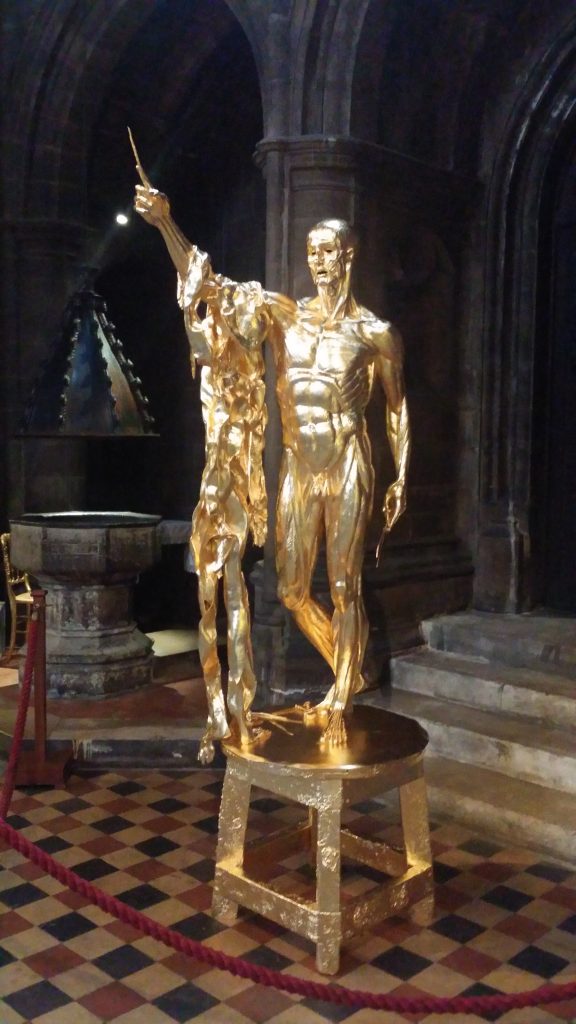
Weather Lore
If Bartlemas Day be fine and clear
You may hope for a prosperous autumn that year.
But it was also said that ‘St Bartholomew brings the cold dew’
It was also the day that might end the 40 days of rain brought by a wet St Swithun’s Day. (If such a long period of summer rain has ever occurred).
All the tears. St Swithin can cry
St Barthelmy can wipe dry.
See my post on St Swithun here
Also on this day:
Black Bartholemew Day
The St Bartholomew’s Day Massacre August 24th 1572.
This was the day when the Protestants of Paris were massacred. Up to 30,000 huguenots were killed in a massacre that spread from Paris to the countryside. It happened following a rapprochement between the religions and the marriage of the Catholic Marguerite de Valois and Huguenot Henry de Navarre on 18 August. Henry was heir to the throne, and prominent protestants were in fiercely Catholic Paris for the celebrations. Riots followed assassination attempts, and attempted genocide followed. Much like the St Brice’s Day Massacre in 1002 when the English King ordered the death of all Danes.
The French massacre led to wholesale emigration of the Protestants to the UK. William Shakespeare lodged with a Huguenot family in London. Being highly educated and skilled the immigrants generally did very well in England but the size of the wave wasn’t without opposition.
First published August 2025
World Wide Web goes World Wide August 23rd 1991

Archaeometry
Today is the day that the World Wide Web was first introduced to the world. I was working as a freelancer helping set up computer systems for the Freud Museum, in London. The Freud Museum was funded by an American organisation who wanted to support the history of Freud and Psychoanalysis. They were early adopters of email, and one of the staff, Tony Clayton, I think, introduced me to this new thing called the World Wide Web. How soon it changed our lives!
So, this post is the first in an occasional series on my role in digital heritage.
My use of computers began in 1975/6 when I worked in the Research Laboratory for Archaeology and the History of Art, Keble College, Oxford University. I was a Research Assistant working with Mike Barbetti. He was a Research Fellow from Australia and an expert on the science of the earth’s magnetic field, and a pioneer in archaeomagnetism.
So what was it all about? In short, the Magnetic Pole does not always point due north. From time to time, it wanders around and sometimes reverses completely, pointing south. Also, the intensity of the magnetic field changes with time. Mike was interested in the science behind these reversals but also interested in the archaeological by-products of the findings.
We were using archaeology to get well dated samples to plot accurately magnetic fluctuations through time. It was hoped the changes in direction or intensity of the magnetic field would allow archaeological sites to be dated. Secondly, we could use the readings to determine whether clay deposits had been heated or not. The iron particles in clay would, when heated, align to the contemporary magnetic field. Mike had collected samples from Africa including the famous Olduvai Gorge, and we contributed to the discussions on the first use of fire by the genus homo.
It turned out that dating applications were severally limited, as it proved difficult to create an effective reference curve. But sporadically, a use for archaeomagnetism crops up in the literature.
Mike was kind enough to include me as joint author on 3 papers which were accepted by Nature and which remain my most cited papers.
When I thanked him, saying how kind it was for him to include me. He made a point of telling me I had every right to have my name on the papers as I not only did a lot of the work, but I contributed ideas to the study. He taught me a lesson that you should always be generous acknowledging contributions.
The specimens he brought back, were encased in plaster of Paris, I went to a shed in the garden of the terrace house that was the Research Lab. There I cut them up with a saw. We then measured the intensity and direction of the magnetic field in the samples. The results were processed by a computer program written by Mike. I prepared the experimental results on magnetic cards and uploaded them for a data run on the main frame computer at the Oxford University Computer Centre. The Computers were the size of a house, but there was a Unix minicomputer in the basement of our lab. There was always mistakes on the first run and then you reran the programme with edit cards at the front which were coded to do things like: ‘change 127 on the first card to 172’. The corrected results were rerun the next day. Seems very primitive and slow now but then it was cutting-edge technology.
After a couple of years, I began my career as a field archaeologist. Having seen how powerful computers could be, I decided, in the late 1970’s, that Archaeology needed computers. So I set out to find out how to use them for myself and where they might come in useful. This took me on an exciting journey of exploration which began with signing up for a Part-time PhD at Birkbeck College in Computer Applications in Archaeology, while I continued working at the Museum of London as an archaeologist. The study consisted of creating a database structure to hold archaeological field records, and to link this to digitised copies of context plans. I was hoping to show that we could interrogate the data, asking questions like ‘Draw a site plan of all contexts which have pottery dating to the Flavian period’. This would, perhaps, speed up the post excavation work, and enable a more sophisticated analysis of data.
To be continued.
Charles I Raises the Standard August 22nd 1642
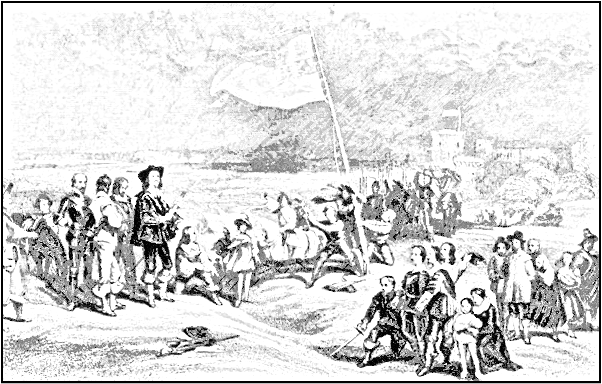
This is the day when the English Civil War began. The King had been in York, and as he traveled South he was refused entry to first Hull, then Coventry. Attempts to mediate the dispute between King and Parliament were proving fruitless. King Charles I decided to call the people to join him to protect the Monarchy. He chose to do it at Nottingham, as he was hoping for a supply of weapons to come from Holland where his wife was. The weapons could come up the Trent to Nottingham. Also it was closer to London than other possible locations.
It was a wet day, and not many people had responded to the King’s military appeal. The King’s sons and nephews were there with a few courtiers and heralds.
They went to the top of Nottingham Castle. At the last moment the King decided to amend the statement that the Herald would deliver. So as the trumpets sang and the Royal Standard was unfurled the Herald found difficulty in reading the King’s writing. It added to a right Royal washout. 6 days later the Standard was blown down by the wind.
The Royal Standard
What did the Standard look like?
I was happy to come across this post by Alan Turton who has researched what the Royal Standard might have looked like. These are his drawings of the two sides of the Standard.


The motto means ‘God and my Right’. It expresses what got Charles to this unhappy pass. He believed he had a divine right to rule. Parliament thought he had to rule according to the laws of the land, Magna Carta and with the consent of Parliament.
What lead up to the raising of the standard?
How did it get this far? I will be posting further posts on the Civil War over the next year. But, for now, here is preview:
Charles had ruled without Parliament for 9 years, and ruled arbitrarily against the tenets of Magna Carta. Then he stumbled into a war in Scotland which he lost. So he needed to call Parliament. Parliament said yes, we can provide you with money, but only if you rule as a constitutional monarch.
On 4th of January 1642, Charles I attempted to regain the powers he had given away. He planned to arrest the leaders of Parliament. The King delayed his coup so that the 5 members John Hampden, Arthur Haselrig, Denzil Holles, John Pym and William Strode were forewarned. They fled to seek the protection of Puritans in the City of London.
The King followed, again waiting a day. When he got to the Guildhall the mob was out in force, and he was met by crowds of Londoners, shouting ‘Liberty of Parliament.’ He fled back to Westminster, and on January 10th went to Hampton Court. He then moved north.
Negotiations between King and Parliament continued, while both sides starting arming themselves. The House of Commons and House of Lords, on June 1st, sent the King ‘Nineteen Propositions’. The King rejected them while he was in York.
Towns and Counties began declaring for one side or the other. The King marched towards Kingston-upon-Hull on the Humber where he had a stash of weapons left over from his unsuccessful campaign against the Presbyterians in Scotland. The recently Parliamentary-appointed Military Governor resisted the Royal forces, and the King retreated towards Nottingham.
The King then Raised the Standard to recruit subjects to join his army. He only had 800 mounted troops and 3000 foot soldiers. Parliament could raise double this from London alone.Troops were raised from the County or Borough Militias.
The Parliamentary forces were led by Lord Essex, who blocked the route to London. There followed two indecisive battles, which the Royalists ‘won’. At Edgehill the Royalist cavalry, swept both flanks of the Parliamentary Army away. What would have been a decisive victory was lost when Prince Rupert’s troops just kept pursuing their defeated flank rather than regrouping and attacking the King’s centre.
But the way was clear to London. Prince Rupert beat a small force of Londoners at Brentford. The Royalists marched to Turnham Green, in what is now Chiswick in West London. On November 13th, the two sides met. The outcome of which would decide the course of the Civil War.
First written August 2025
Time for Ice Cream August 20th
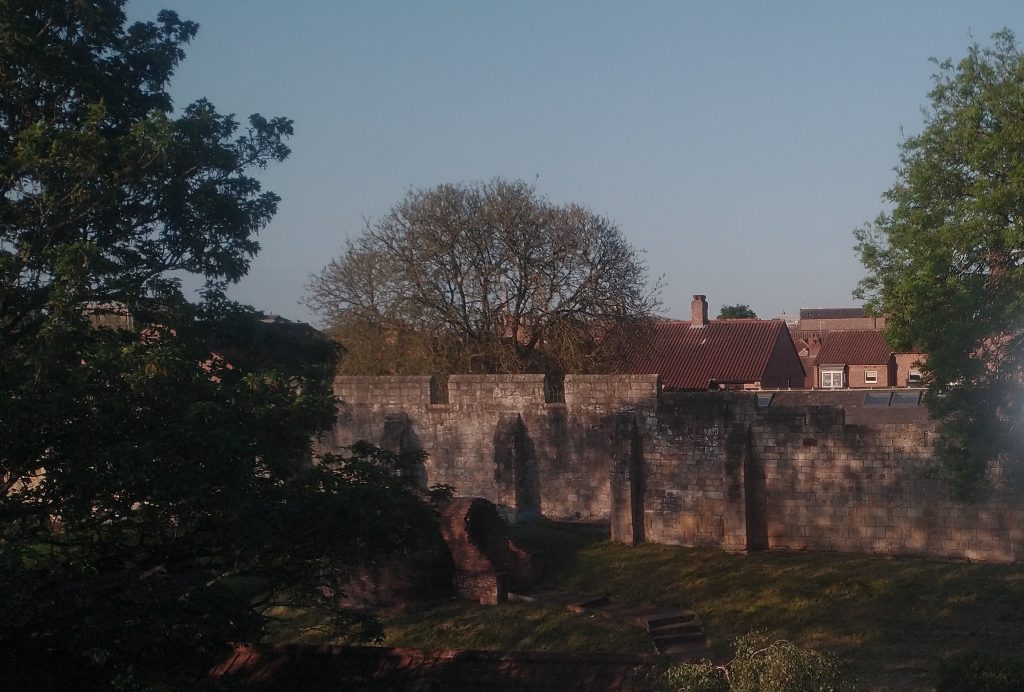
In 2023 I noticed a strange brick building dug into the bank in front of the City Wall. I could only see it from my Hotel Window, near Monk Bar. ‘Very curious.’ I thought, as I looked, ‘It’s either a kiln or an Icehouse. ‘ A ridiculous place for a kiln, I concluded, and as the weather was nice, I went out to explore.
By Monk Bar (Bar means Gate in York) I found a pub called the Keystones. Through its yard I could see the round brick structure, in the photo below.
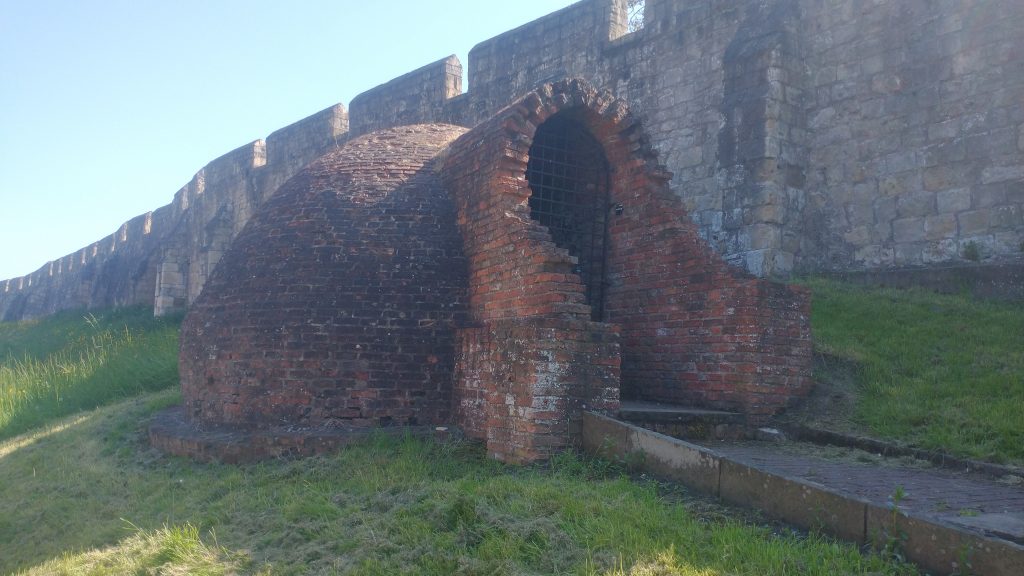
‘Icehouse!’ I thought to myself with increasing confidence. The ladder to the cavernous conical hole beneath it proved the point. It dates to about 1800.
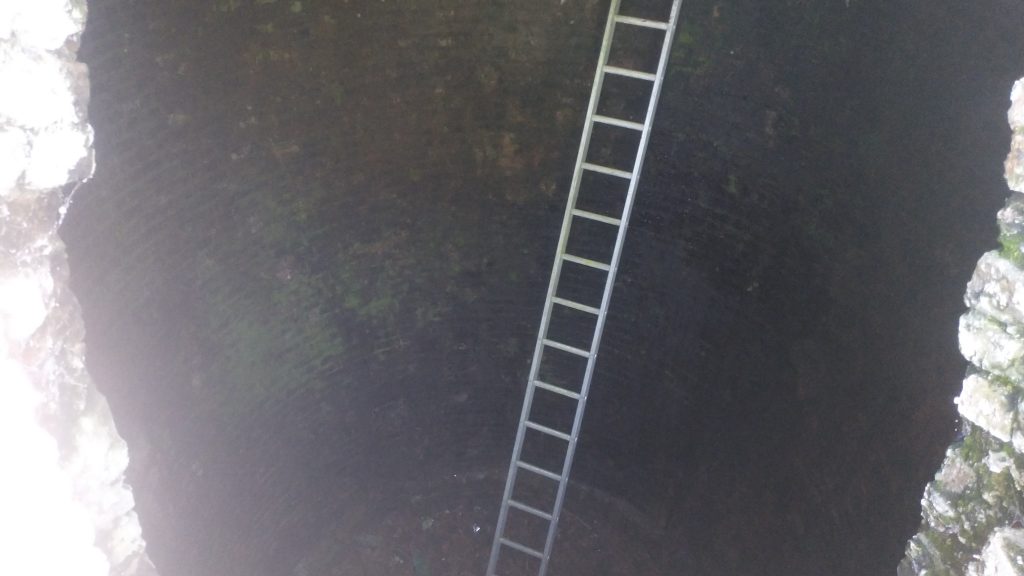
I wrote a brief history of Ice Houses in November 2022. This you can read in my post ‘How to Make a Dish of Snow’ here. But it doesn’t say much about ice cream. I have been meaning to write a piece on that subject since I read an article on the history of Ice Cream. It was in the Friends of the British Museum magazine. I intended to précis it and do a little research and include here. But, in the meantime, I received an email from ‘Jetpack’, a plugin for WordPress users, that offered me an AI plugin, which I wanted to try. So this is the first AI generated piece of information I have ever used (Aug 2023).
WARNING AI GENERATED TEXT!
Ice cream has a long and fascinating history. It’s believed that the ancient Chinese were the first people to eat a form of ice cream, flavoured with fruit and honey. The Persians also had a version of ice cream using ice and grape syrup. In the 13th century, Marco Polo brought the idea of ice cream to Europe from China. The dessert became popular in Italy, where early recipes called for flavoured snow and ice. By the 18th century, ice cream was regularly served in English and American households. Today, ice cream is enjoyed all over the world in many variations and with a plethora of flavours.
JetPack AI Generated (I’ve improved spelling and grammar.)
Now, settle yourself down with that pistachio and ciocolata gelato and read real writing on the subject. This from the British Museum. Please note that the ice house pictured below is also, weirdly, just by a City Wall. But this time in Mesopotamia.
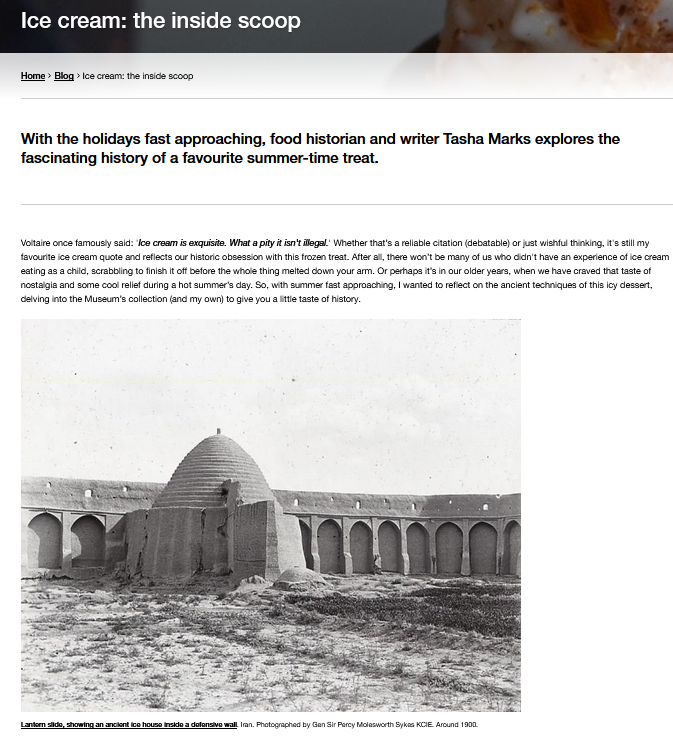
To read the British Museum Post click British Museum Blog ice-cream-inside-scoop
First published August 2023, republished August 2024. August 2025
Hardy’s Henge Given Protected Status August 19th
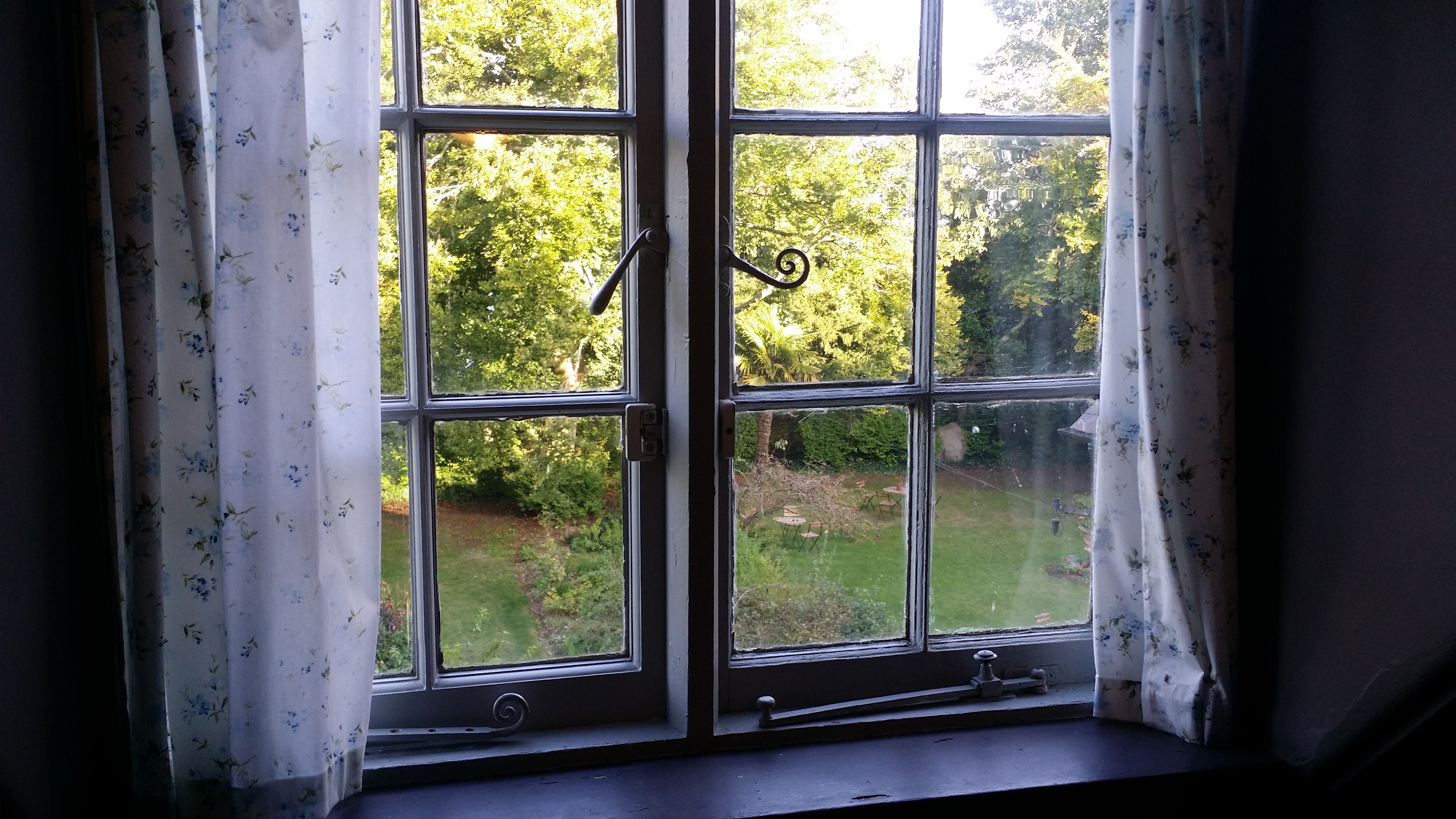
Author of ‘Tess of the d’Urbervilles’ Thomas Hardy was an architect and designed his own house. During the work on Max Gate, the builders came across a large block of sandstone. The stone is of a type called ‘Sarsen’ at Stonehenge. it is ‘a type of silcrete, a rock formed when sand is cemented by silica (quartz)‘. It is a hard sandstone.
Hardy, who loved history, had it relocated into his garden and called it his ‘druid stone’. This recalls one of the most famous scenes in ‘Tess’. She is sleeping on the Altar Stone at Stonehenge as the Police move in to arrest her for murder. Angel, her lover, persuades the Police to let her enjoy a few more minutes of peaceful sleep. After which they arrest her, try her, find her guilty and hang her at Winchester. Spoiler alert?
The Altar Stone at Stonehenge, by the way, has very recently been discovered to be from Scotland. A discovery that confirms that Stonehenge was an immensely important site in the Neolithic and Bronze Age.
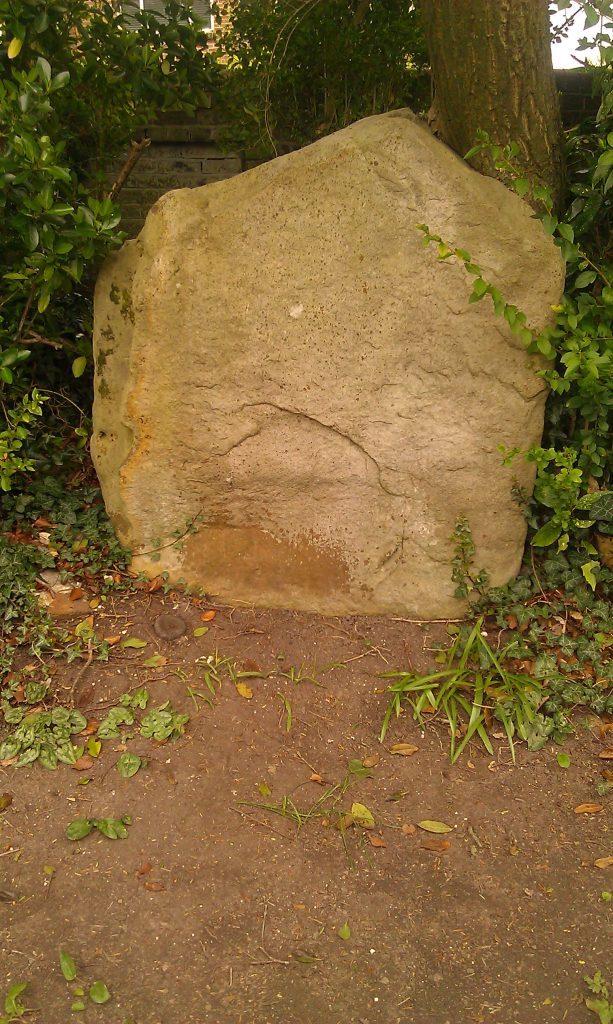

Hardy loved history. How glad he would have been to know his house was in the middle of an important Henge. Hardy’s Henge (aka Flagstones) turns out to be older than Stonehenge. In the 1982. a geophysical survey in advance of the Dorchester Bypass was undertaken. It found evidence of a circular enclosure outside Hardy’s house. This was followed by an excavation in 1987-8. This discovered a large circular bank 100m in diameter, from the Neolithic period.
Half of Flagstones, is largely preserved beneath Max Gate, and has now been officially listed and protected. The excavations suggested a date of construction of 3,000 BC, about the time of Stonehenge’s first construction. But it has just been redated to 3,200BC making Flagstones older than Stonehenge!
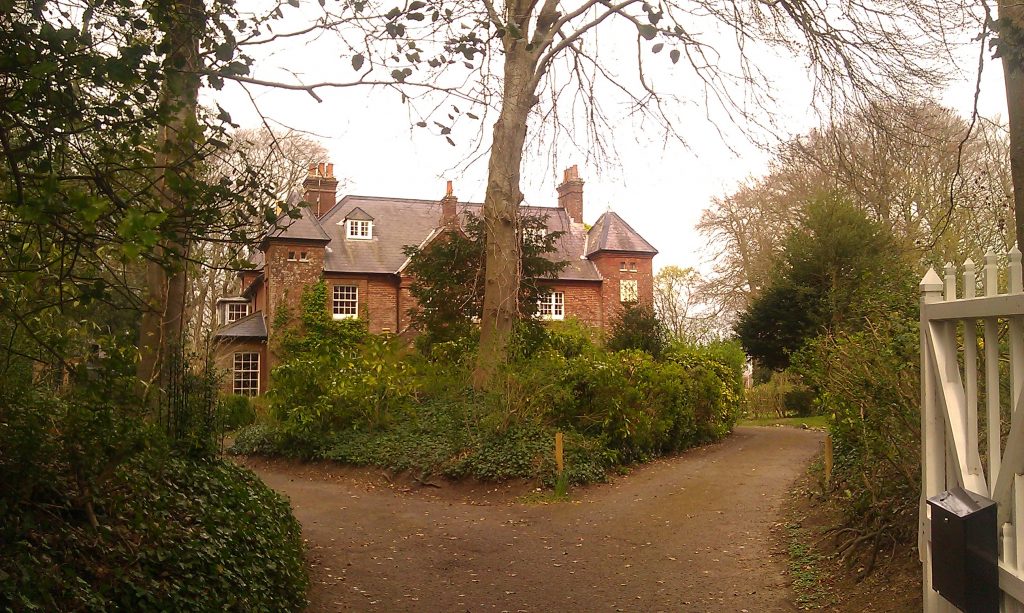
In 2022, targeted excavation designed to explore the other half of the circle revealed further dating evidence. This suggests it was built 500 years before Stonehenge, earlier than 3,500BC. The suggested date of 3650BC makes it one of the earliest in the South West. It was giving listed protection on the August 19th, 2024. (redated to 3650BC)
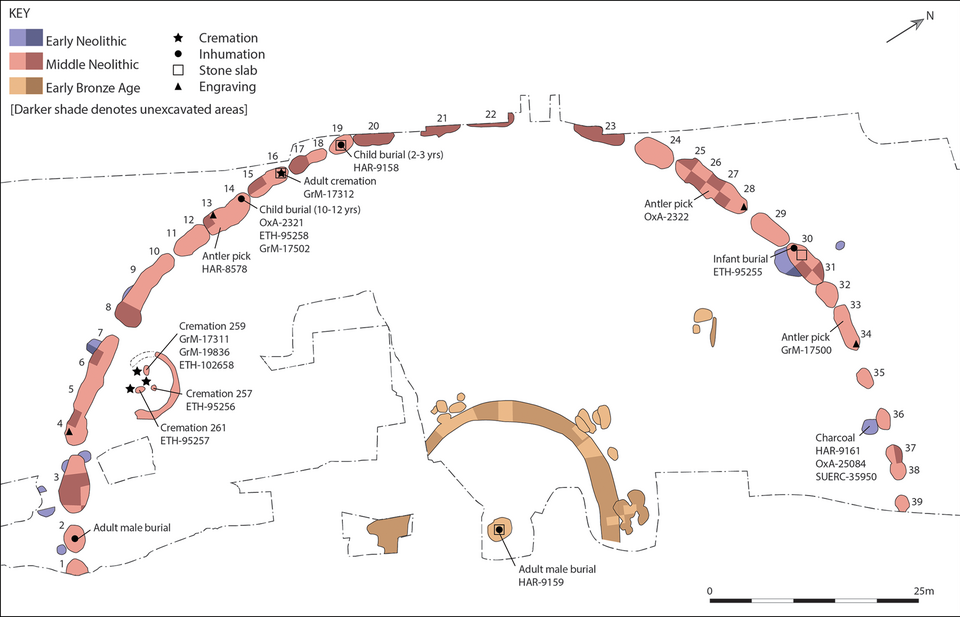
The enclosure consists of a single ring of unevenly spaced pits, forming an interrupted ditch system roughly circular. The dating evidence does not prove that this circuit was built before 3,500 BC. But it does show there was a neolithic presence on the site at this early date. Burials were found in the bottom of the pits forming the enclosure. Four of these pits were had markings on the lower pit walls. These were cut by flint forming pictograms of varying forms from curvilinear, to linear. There was little activity in the Late Neolithic. The site seems to have been reused for funerary and ‘other practices’ during the Bronze, Iron Ages and Roman period.
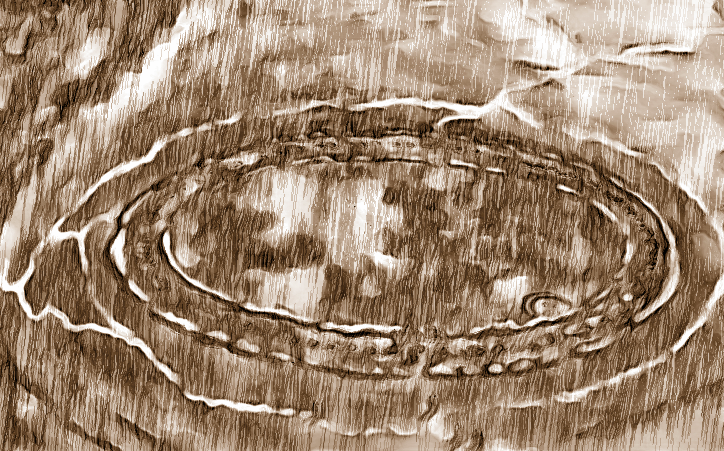
These recent finds make Hardy’s Henge an important precursor to Stonehenge. The site is built on a ridge parallel with the River Frome. Dorchester, a couple of miles from Max Gate, is another ‘ritual landscape’ like Stonehenge. Here are a cluster of important Neolithic and Bronze Age monuments. In the centre of the Town, was found evidence of a massive wooden circle. The postholes are found marked on the floor of the town centre car-park as shown below. The Great Henge is a massive 360m in diameter, covering much of the much later Town Centre. It was built in around 2100 BC.

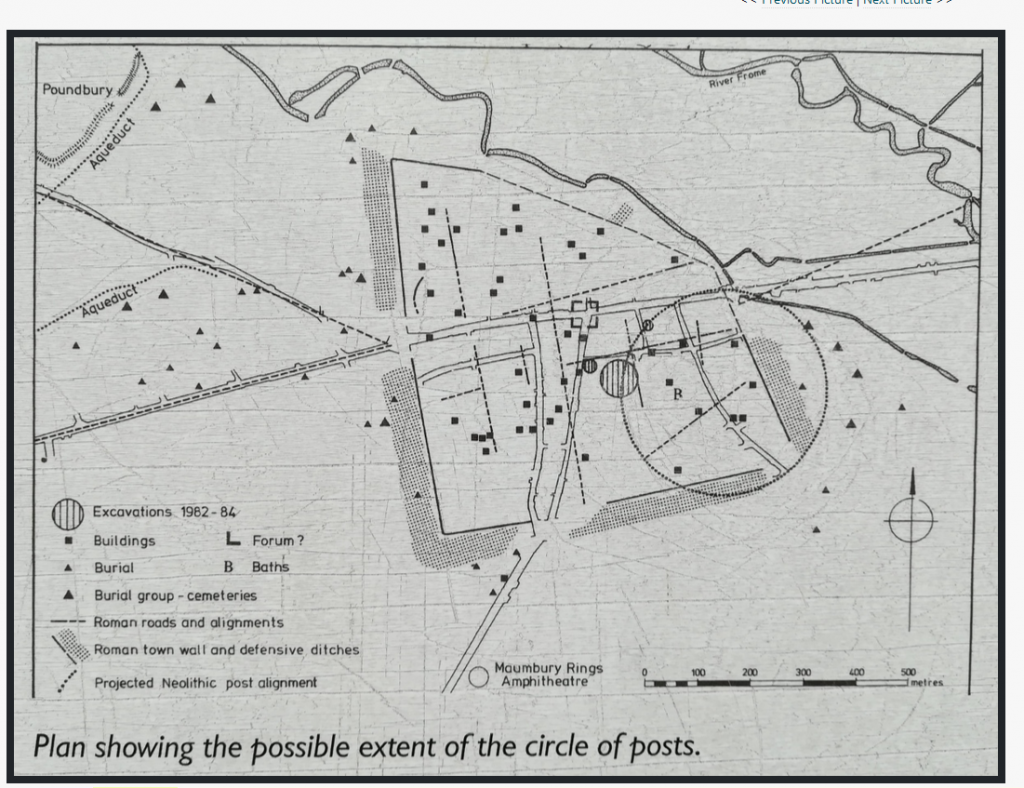
Just outside of Dorchester is a Roman Amphitheatre. This is where Hardy sets the reunion of the Mayor of Casterbridge and Susan Newson. She was the wife he sold at a county fair, years ago when he was a young man. But it began life as another Neolithic circular enclosure. This had an external bank, and an inner Ditch in which were dug 44 tapering pits, up to 10m in depth. Antler picks, chalk objects, including chalk phalluses, were found. The disused amphitheatre was used for executions in the early modern period.
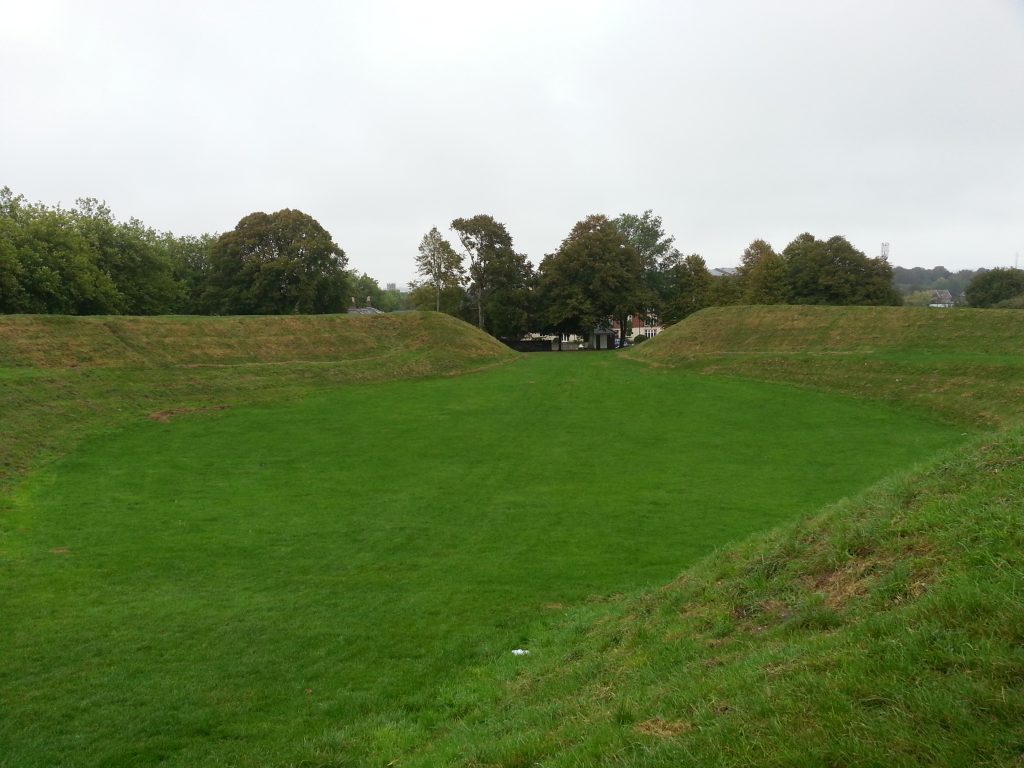
A few miles away, at the Iron Age Hill Fort of Maiden Castle, is a Neolithic Causewayed Enclosure. Hardy also wrote about Maiden Castle, and an excavation.
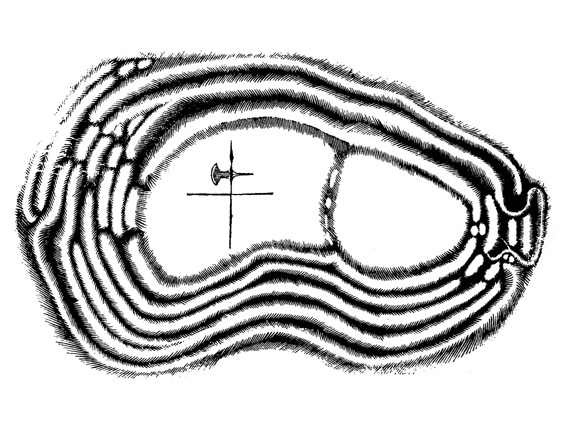
These ritual landscapes, such as Dorchester, Stonehenge, Avebury, Heathrow and elsewhere shows a clustering of ritual places in important landscapes. It suggests evidence of regional organisation. Stonehenge, however, continues to lead the way for evidence of not only regional but international importance. It drew people, and objects from not only England, Scotland and Wales, but also from the continent.
For further details of the Flagstones listing and excavation, here is the official listing document:
https://historicengland.org.uk/listing/the-list/list-entry/1489792?section=official-list-entry
For more of Thomas Hardy on my Almanac of the Past see:
Revised 19th August 2025
Chipping Campden Murder? August 16th 1660
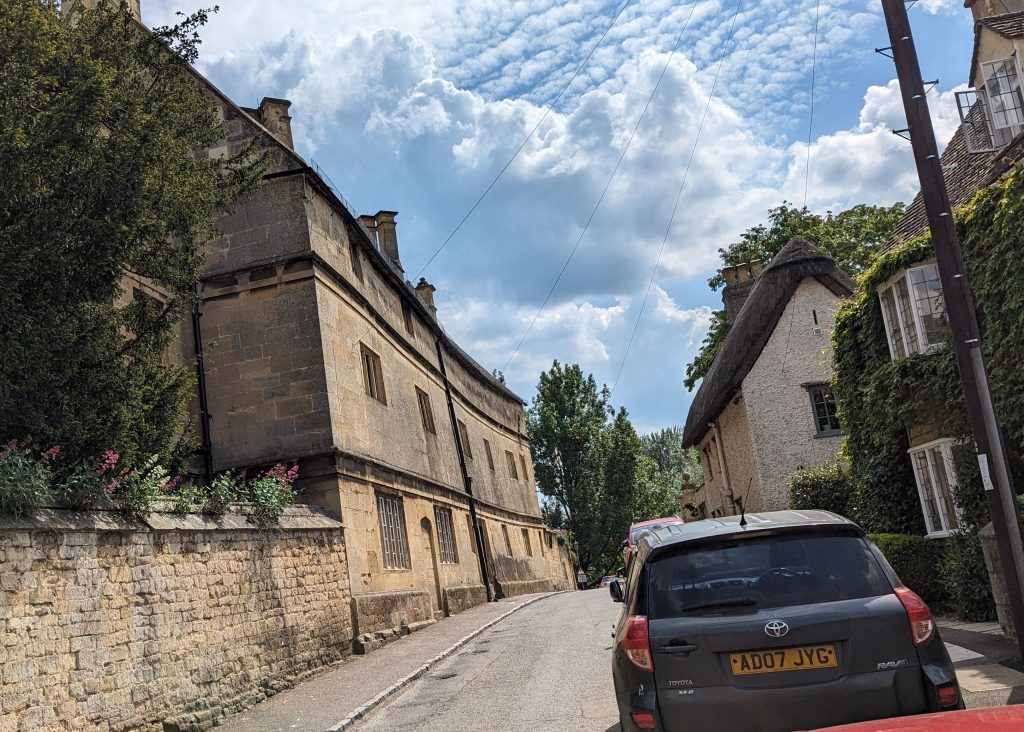
When I take Road Scholar groups to Chipping Campden, in the Cotswolds. We pass the Court House (pictured above) where I tell the story of the disappearance of William Harrison. Last time, looking at my old ragged notes, I noticed that the disappearance took place on the 16th August.
On that day in 1660 70 yr old William Harrison left the Court House where he was the Steward. The Steward went for a 2-mile walk, collecting rents. When he didn’t return, his wife sent out a man servant, John Perry, to bring him home. Neither had returned by the next morning.
Harrison’s son went out to search for his dad, and found John Perry. The two of them searched for Harrison without luck. Meanwhile, Harrison’s neckband and shirt were found with his hat. The clothes were said to be blood stained, but as those who read Sherlock Holmes will know, there was no certain test for blood stains (a test was introduced in the late 19th Century).
But the identification of blood stains led to suspicion of John Perry. He said he was innocent, but he buckled under questioning, maintaining it was nothing to do with him. B he claimed his brother and mother murdered Harrison for his money. Perry soon changed his testimony about his brother and mother and eventually pleaded insanity. All three were hanged.
Two years later, Harrison returned home, claiming to have been abducted by pirates and sold into slavery in Turkey before escaping and returning to England.
This is, pretty much, the bones of the story I have told my groups over the last 15 years. But what is wonderful about my job and this ‘Almanac of the Past:, is that you get to dig that little bit deeper than the local guidebook.
The first new ‘fact’ I discovered was that Harrison was Steward to the Lady Juliana Noel. She has a very prominent monument in St James Church, near the Court House and has long fascinated me. I will write more about her one day. Meanwhile, have a look at my post on her Dad, Baptist Hicks and how the family came to be Lords of the Manor of Chipping Campden, and Campden Hill, Notting Hill.
Back to my new discoveries about the Crime! John Perry, his mother and brother were actually tried twice for the crime. The first judge refused to try them for murder in the absence of the body. But they were encouraged to plead guilty to robbery, as they would then be eligible for an amnesty for first time convictions introduction by the new King Charles II on his restoration. So they were convicted.
However, another Judge was willing to try them in the absence of a body, and they were, after all, tried for the murder. But having pleaded guilty to robbery (to avoid the risk of being executed), they had no real defence to the charge and were sentenced to be hanged.
Nor was the hanging simple: Joan Perry, the mother, was hanged first because she was said to be a witch who was preventing her sons from pleading guilty. After she was hanged, her sons still maintained their innocence The oldest son was then hanged. But the youngest son still claimed his innocence and was hanged too.
The hangings took place on the hill above Broadway, the highest point of the Cotswolds, where Broadway Tower now stands, and a famous beauty spot. Mother and son were buried under the Gibbet, but John Perry was hanged in chains and kept on display as a warning to others not to follow his example.
As to William Harrison’s story of his abduction, it sounds a little unlikely in rural Gloucestershire. To a modern mind, it seems more likely that he felt the need to leave home, or had some form of breakdown, or did he collude with the Perry’s to steal money from the Noel Estate? I wonder how he reacted when told that three people lost their lives because of him?
But, it has been suggested that Harrison was kidnapped by people involved in the English Civil War who had secrets to keep which Harrison as Steward might have known. He said English people had kidnapped him and put on a ship to America which was attacked by ‘Turkish’ (maybe Barbary Pirates).
The case led to a ‘no body, no murder’ rule which survived until 1954. But in modern times a body is not essential to a successful prosecution for murder, particularly in domestic murder cases, provided there is sufficient evidence to prove the case.
The case is normally referred to as ‘The Chipping Campden Wonder’ and it has often been written about, for example by Linda Stratmann. I have been wondering why it was so named, there being nothing wonderful about a murder or an abduction. But I have just found a ballad that was written about the case that might explain it. This claims that Joan Perry was indeed a witch, Harrison was attacked and buried in a pit but was, somehow, magically conveyed to Turkey, from which he eventually escaped to return to Chipping Campden. The Wonder is presumably the saving of Harrison and transportation to Turkey? The ballad clarifies that there was therefore no miscarriage of justice, as the Perrys were involved with diabolical doings, and that the Grace of God saved Harrison despite the best efforts of the Perrys.
Well worth reading the text of the ballad below (source: https://omeka.cloud.unimelb.edu.au/execution-ballads/items/show/1216)
Bodleian 18713, Wood 401(191), Bod18713
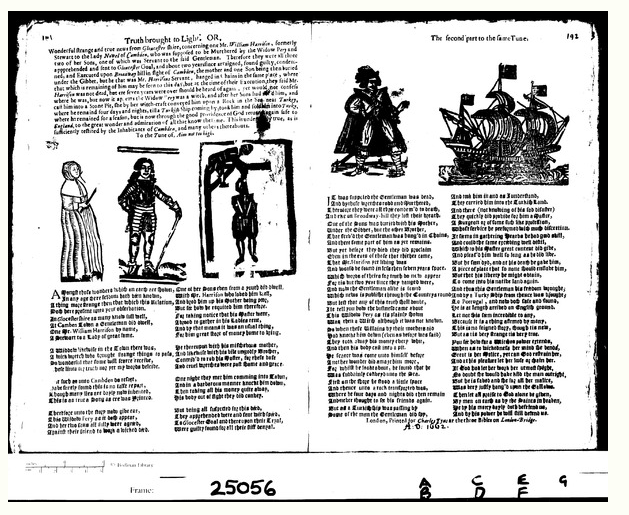
‘Amongst those wonders which on early are shown,
In any age there seldom hath béen known,
A thing more strange then that which this Relation,
Doth here present unto your observation.
In Glocestershire as many know full well,
At Camben Town a Gentleman did dwell,
One Mr. William Harrison by name,
A Stewart to a Lady of great fame.
A Widdow likewise in the Town there was,
A wick wretch who brought strange things to pass,
So wonderful that some will scarce receive,
[…]hese lines for truth nor yet my words beleive.
[…] such as unto Cambden do resort,
Have surely found this is no false report,
Though many lies are dayly now invented,
This is as true a Song as ere was Printed.
Therefore unto the story now give ear,
This Widow Pery as it doth appear,
And her two sons all fully were agréed,
Against their friend to work a wicked déed.
One of her Sons even from a youth did dwell,
With Mr. Harrison who loved him well,
And bred him up his Mother being poor,
But sée how he requited him therefore.
For taking notice that his Master went,
Abroad to gather in his Ladies rent,
And by that means it was an usual thing,
For him great store of money home to bring.
He thereupon with his mischevous mother,
And likewise with his vile ungodly Brother,
Contriv’d to rob his Master, for these base
And cruel wretches were past shame and grace.
One night they met him comming into Town,
And in a barbarous manner knockt him down,
Then taking all his money quite away,
His body out of sight they did convey.
But being all suspected for this déed,
They apprehended were and sent with spéed,
To Glocester Goal and there upon their Tryal,
Were guilty found for all their stiff denyal.
Jt was supposed the Gentleman was dead,
And by these wretches robd and Murthered,
Therefore they were all thrée condem’d to death,
And eke on Broadway-hill they lost their breath.
One of the Sons was buried with his Mother,
Vnder the Gibbet, but the other Brother,
That serv’d the Gentleman was hang’d in Chains,
And there some part of him as yet remains.
But yet before they died they did proclaim
Even in the ears of those that thither came,
That Mr. Harison yet living was
And would be found in less then seven years space.
Which words of theirs for truth do now appear
For tis but two year since they hanged were,
And now the Gentleman alive is found
Which news is publisht through the Countrys round
But lest that any of this truth shall doubt,
Ile tell you how the business came about
This Widow Pery as tis plainly shown
Was then a Witch although it was not known.
So when these Villains by their mothers aid
Had knockt him down (even as before was said)
They took away his money every whit,
And then his body cast into a pit.
He scarce was come unto himself before
Another wonder did amaze him more,
For whilst he lookt about, he found that he
Was suddainly conveyd unto the Sea.
First on the shore he stood a little space
And thence unto a rock transported was,
Where he four days and nights did then remain
And never thought to see his friends again.
But as a Turkish ship was passing by
Some of the men the Gentleman did spy,
And took him in and as I understand,
They carried him into the Turkish Land.
And there (not knowing of his sad disaster)
They quickly did provide for him a Master,
A Surgeon or of some such like profession,
Whose service he performed with much discretion.
It séems in gathering Hearbs he had good skill,
And could the same excéeding well distil,
Which to his Master great content did give,
And pleas’d him well so long as he did live.
But he soon dyd, and at his death he gave him,
A piece of plate that so none should enslave him,
But that his liberty be might obtain,
To come into his native land again.
And thus this Gentleman his fréedom wrought;
And by a Turky Ship from thence was brought;
To Portugal, and now both safe and sound,
He is at length arrived on English ground.
Let not this séem incredible to any,
Because it is a thing afirmed by many,
This is no feigned story, though tis new,
But as tis very strange tis very true.
You sée how far a Witches power extends,
When as to wickedness her mind she bends,
Great is her Malice, yet can God restrain her,
And at his pleasure let her loose or chain her.
If God had let her work her utmost spight,
No doubt she would have kild the man outright,
But he is saved and she for all her malice,
Was very justly hang’d upon the Gallows.
Then let all praise to God alone be given,
By men on earth as by the Saints in heaven,
He by his mercy dayly doth befriend us,
And by his power he will still defend us.’
Set to tune of ‘Aim Not Too High (Fortune My Foe)’
This was transcribed on this site, which is well worth a look!
https://omeka.cloud.unimelb.edu.au/execution-ballads/items/show/1216
First published 2024, republished August 2025
Feast of St Mary & Days off in Anglo-Saxon England August 15th
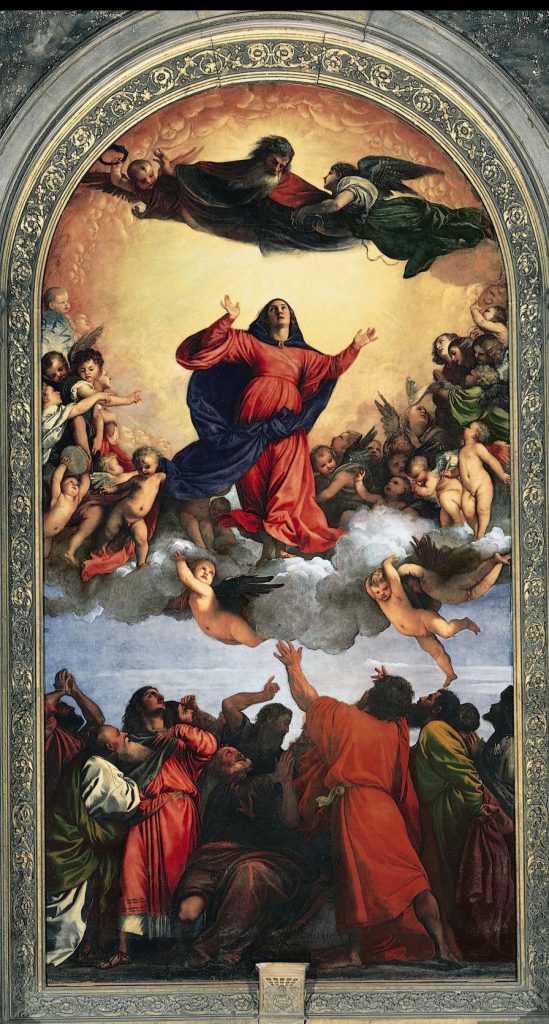
August 15th is the date of the celebration of the Assumption of St Mary. This is the day she went to heaven. Opinion is divided as to whether she died and went straight to heaven. Or did she go directly to heaven without having to pass go? The stories about the Virgin Mary were a big part of the controversy in the Reformation. Protestants did not find evidence in the Bible supporting many of the tales they had been told by the clergy. Once they could read the Bible in their own language they were able to assess the evidence for themselves.
August 15th was taken as a day off in the Medieval oeriod. My post is inspired by Octavia Randolph who has an excellent web site with a fine post on Anglo Saxon Slavery. You can read the post here: https://octavia.net/slavery-in-anglo-saxon-england. But what particularly caught my attention was the excerpt from King Alfred the Great’s laws. It lays down the law on the days off which should be given to freemen.
‘These days are to be given to all free men, but not to slaves and unfree labourers: twelve days at Christmas; and the day on which Christ overcame the devil (15 February); and the anniversary of St Gregory (12 March); and the seven days before Easter and the seven after; and one day at the feast of St Peter and St Paul (29 June); and in harvest-time the whole week before the feast of St Mary (15 August); and one day at the feast of All Saints (1 November). And the four Wednesdays in the four Ember weeks are to be given to all slaves, to sell to whomsoever they please anything of what anyone has given them in God’s name, or of what they can earn in any of their spare time.
Translated by Simon Keynes and Michael Lapidge and taken from Octavia.net
That comes to 38 days by my reckoning. In the UK 4 weeks off is a good average holiday entitlement. If we add 8 bank holidays in England and Wales that gives us 36 days off a year. So 1500 years of ‘progress’ has given us minus 2 days, and a lot less in the USA!
How depressing! Of course, most of these days off were lost during the Industrial Revolution and only clawed back by Trade Unions.
The days off are interesting, obviously Christmas and Easter. Harvest is more of a surprise in that one would expect to be working very hard bringing in the harvest. But, maybe the 7 days off were given after it was brought in?
The individual days make sense as they are the feasts of major saints or festivals – so St Gregory’s Day – he being the Pope who ordered the mission to convert the English to Christianity in 597AD. (See my post on St Gregory here).
Saints Peter and Pauls Day. St Mary and All Saints Day. I’m surprised there is no Candlemas or Michelmas.(More information about celebration of St Peter and St Paul in London in my post here)
Slaves holidays
Slaves seem to only have 4 days however. These are the Wednesday in Ember Weeks. Ember Days and Ember Weeks were Fasting Days, either named after a latin phrase for fasting or from Ymbren which is the Anglo-Saxon for circuit or revolution. It is thought that the days were originally tied to the ‘cycle of life’ that it part of each year. But later on became more liturgical and based on fasting.
They may have been founded in Roman roots. There only seems to be 3 in the days of the early church, rising to 4 ember weeks by the late 5th Century. They were brought to Britain by the mission of St Augustine, under Pope Gregory. These seem to be the dates:
December the week starting after St Lucy’s Day (Dec 13th)
March between 1st and 2nd Sunday
June between Pentecost and Trinity Sunday
September 3rd Week ending at Michaelmas.
So, the poor old slaves get 4 Wednesdays off in the year! This is presumably because the work of the household continues throughout the year, irrespective of season or festival. Maybe they are given a day off on the fasting days because household work can be put off as everyone is fasting?
But the laws make it clear: this is the time the poor slaves can work for themselves and make a little on the side.
Do have a look at Octavia’s web site which for more on slaves in the Anglo-Saxon period.
First published in August 2025
St Albans Peasants Revolt June – August 3rd 1381

We left the Peasants following Richard II out of Smithfield, going home after the murder of their leader, Wat Tyler. If you want to refresh your knowledge see the three links to my ‘Almanac of the Past’ at the bottom of this post. I want to follow the events from Mile End to August in St Albans. They give a good overview of what the Revolt was all about, and how the authorities responded to it.
My source is ‘England, Arise. The People, the King & the Great Revolt of 1381’ by Juliet Barker. I have been reading it for some time. It is very comprehensive and shows how much more there was to it, than the three or four days in London.
The aftermath of Mile End
Rebels from St Alban came back from the meeting with King Richard II at Mile End on June 14th. William Grindecobbe, who was identified as one of their leaders, travelled from St Albans to attend the meeting at Mile End on the day of the meeting. Barker suggests he travelled on the morning of the event. Google tells me it is a 23 mile walk, and would take 9 hrs at least. So, he either travelled by horse or travelled down the day before?
The evidence suggests his interest in the Mile End meeting was to get charters from the King to free the people of St Albans from the onerous feudal demands of the Abbot of St Albans. Grindecobbe is said to have ‘knelt to the King six times’ to obtain ‘letters patent’ for St Albans. Remember, the young King was about 14 at this time, and went to the meeting without his senior government advisors. This leads some to believe he was sympathetic to the demands of the Peasants.
Grindecobbe then returned to St Albans with news of the liberation of the town from its feudal shackles. He left behind Richard Wallingford to collect further royal documentation of the momentous changes in society granted at Mile End.
These included:
the right of St Albans to have borough status
to pasture their animals freely within the town boundary
to enjoy fishing, hunting and fowling rights
to be able to use their own hand-mills rather than take their wheat to the Abbots expensive mill
Some of the monks of St Albans (including the Prior) were so scared of the rebels that they fled to Northumberland (to a daughter church of the Abbey).
The townsfolk, on their return from London, dismantled gates and enclosures protecting the Abbey’s woodland. They demolished a disputed house, and attacked houses of Abbey officials.
Next morning which is said to be the 15th of June (the Smithfield Day) the St Albans people assembled, swore an oath to be faithful to each other. They caught a live rabbit and fastened it to the Town Pillory. Thus, demonstrating their right to hunt on Abbey Lands. They went to the Abbey Prison and freed the prisoners, except one who they beheaded and added his head to the Pillory.
Richard Wallingford arrived from London with a banner of St George, erected it in the Town Square and marched to the Abbot to present the King’s letters he had obtained.
The letters ordered the Abbot to hand over certain charters made by ‘our ancestor King Henry’ concerning the various issues listed above (and others.)
Faced with documents signed with the King’s Privy Seal the Abbot had to comply. The rebels burned various of the deeds and charters in the market-place. But they felt the Abbot was still withholding an important document, which the Rebels said was illuminated with 2 capitals letters one in gold and another in blue.
The history of the dispute between towns people and Abbot went back to Domesday and possible beyond to the time of King Offa. Or to put it another way the peasants thought they were restoring rights that had been illegally taken from them by the Abbot.
For example, in 1251 Henry III had granted legal freedoms to the men of St Albans. But the Abbey had used its power to circumvent this much desired status. It obviously rankled bitterly with the men of St Albans. And here we have to remember those men were not just peasants, there were a number of substantial citizens who stood with the Rebels. They were standing up for their rights against an oppresive Abbot.
An example of the arrogance of the Abbots is found in a previous dispute about the use of hand-mills. The Abbot had confiscated all the hand-mills used by the townsfolk and paved his parlour with them! Now, the Peasants dug the hand-mills up and took them home.
Over the next few days the Abbot was forced to confirm the abolition of villein status, and many other measures enshrined in the feudal system. For example, he had to confirm the legality of the locals using hand-mills rather than paying to use the Abbots Mill. The Rebels were scrupulous in documenting the new freedoms. This suggests that their destruction of legal documents was not a sign of hatred of written records but their dislike of their use in oppressing them.
What is clear is that at this point of time, the Rebels and the authorities believed the King had indeed liberated peasants and towns people from feudal exactions.
Reaction
After the Rebels had scattered following the Smithfield confrontation, the Government eventually regained its nerve. Or to put it another way, maybe the older heads finally persuaded the young King Richard II that he was wrong to support the Rebels in their demands for reforms to the feudal system.
On 29th June, Sir Walter atte Lee, arrived in St Albans with 50 men-at-arms, and a large group of archers. He was an experienced soldier, ex Member of Parliament, and a Justice of the Peace. By this time St Albans was at peace. But Lee restored the Abbey’s supremacy over the town’s people, and arrested Grindecobbe and other leaders of the Town. However, the Town stood solid and juries refused to accept their leaders had done anything wrong. Grindecobbe was released.
However, the King and his Chiel Justice Tresilian arrived. They had been in Essex putting the revolt down. On 2nd July Richard agreed to reverse all the concessions and charters he had conceded at Mile End. Why he changed his mind we do not know.
In St Albans Tresilian did not bother about the niceties of the legal system. He made it clear that people who protected the rebels would suffer their fate. Grindcobbe was thrown back in prison on July 6th, and Grindecobbe and 14 others from St Albans were hanged, drawn and quartered. The hand-mills were returned to the Abbot who had them set back in his parlour floor, and all the reforms were reversed.
On the 13th July John Ball was tried at St Albans possibly having been captured in Coventry. He was executed, beheaded and quartered on July 15th. His four quarters were sent to 4 cities to be displayed. We know very little about Ball’s role in the uprising and most of what we think we know was made up by his enemies. He may have been a simple honest preacher, pointing out the unfairness of the oppressive system. Not perhaps the revolutionary firebrand, preaching a form of primitive communism as portrayed by Walsingham.
His execution was at St Albans presumably because this was where the King and his Chief Justice were.
The Rebels at St Albans were hung in the woods they had briefly gained access to. Their bodies were ordered to be hanged ‘until they lasted’. But a local man cut them down and buried them. On August 3rd the authorities ordered that the town’s people find the bodies, dig them up ‘with their own hands’ and hang them up again but this time with chains.
Over a year later, on September 3rd 1382, the King, following a plea from his Queen Anne gave license for them to be taken down and buried.
80 other rebels in St Alban’s were sentenced and imprisoned.
Scenes like this were repeated all over England.
Chief Justice Tresilian
He became a leading member of King Richard’s Government. Richard became increasingly unpopular as he grew up. And Tresilian, on 17th November 1387 was found guilty of Treason by the Lords Appellant (who were trying to restrain Richard’s misused power).
Wikipedia tells us his fate:
‘He fled and on 19 February 1388, he was discovered hiding in sanctuary in Westminster. He was dragged into court with cries of ‘We have him!’ from the mob and, as he was already convicted, was summarily executed, being hanged naked before his throat was cut.’
Can’t help feeling he got what he deserved.
Richard II
Richard himself was eventually forced to abdicate (1399) and was supplanted and then murdered by Henry Bolingbroke. There is some evidence that Londoners remembered his role in the repression of the Revolt.
Bolingbroke was saved during the events of 1381 by the intercession of a couple of the Rebels who evidently felt the young son of John of Gaunt should not suffer for the sins of his dad. One of these people was a woman who was identified as a leader of the Revolt, showing women did not have a passive role in it.
First published August 2025
Old Lammas Day & Handfasting August 12th
Before 1752 and the introduction of the Gregorian Calendar this was Lammas Day (see my post (here).
Charles Kightly in his ‘Perpetual Almanac of Folklaw’ quotes an 18th Century description of the Scottish practice of trial marriages:
‘At the Lammas Fair, it was the custom for unmarried persons of both sexes to choose a companion, according to their liking, with whom they were to live till that time next year. This was called Hand-fasting, or hand in fist. If they were pleased with each other, then they continued together for life: if not, they separated, and we’re free to make another choice. ‘
Old Statistical Account 1794, Parish of ‘Eskdalemuir’
Previously, I posted about the selling of wives at country fairs as depicted in Thomas Hardy’s Mayor of Casterbridge. Look here to see it.
Handfasting & Shakespeare
Handfasting was an established part of what my grandmother would call courting. There are many sources of information about it but the most interesting one I have come across is the one Shakespeare was involved with. This is described in detail in Charles Nicholl’s book ‘The Lodger’. This investigates Shakespeare’s time living in lodgings in Silver Street, between the Guildhall and the Aldersgate in the City of London.
He was called as a witness to a marriage between the daughter of his landlord and their apprentice. The son-in-law accused his father-in-law of not paying the agreed dowry. Shakespeare was called because he had been instrumental in bringing the young ones together and seems to have presided over their handfasting.
It was recognised that a marriage could be contracted by a pledge in front of witnesses while holding hands.
The Church insisted that a Church marriage should be held before sex could be enjoyed. But popular opinion was that it was permissable and often after the Handfasting ceremony the couple would be sent to bed with ceremony.
George Wilkins a fellow lodger and playwright used handfasting in a play of his. Shakespeare used the custom as a central part of the plot in Measure for Measure. As You Like It also pivots around a betrothal. These plays were written about the time Shakespeare was involved in his own betrothal drama.
For much more detail read the excellent book by Charles Nicholl who also wrote a wonderful book in Christopher Marlowe called ‘The Reckoning’
Finally, Charles Kightly also alerted me to this method of choosing a wife (please don’t try this at home):
So William Roper came one morning pretty early to Sir Thomas More with a proposal to marry one of his daughters… who were then both together abed in their father’s chamber asleep. He carries Sir William into his chamber and takes the sheet by the corner and suddenly whips it off. They lay on their backs and their smocks up as high as their armpits. This awakened them and immediately they turned on their bellies. Quoth Roper I have seen both sides and so gave a pat on the buttock he made choice of, saying Thou art mine. Here was all the trouble of the wooing.’
Quoted in John Aubrey ‘Brief Lives’. Late 17th century.
Perseid Shower at its peak today
Perseid meteor shower coming to its peak. But they arrive every year. This year from July 17th to Aug 24th. As this roughly coincides with St Lawrence’s Day on August 10th they are also known as the Tears of St Lawrence.
St Clare’s Day & the Minoresses of St. Clare August 11th

Today is the Feast day of St Clare of Assisi. An area of the City of London, called the Minories, is still to this day named after the Abbey of the Minoresses of St. Clare without Aldgate. This was was founded in 1294. The Abbey was part of the Order of St Clare or the Poor Clares as they were known . A minoress was a nun from the Order of Friars Minor (aka Franciscans) .who were also known as the Minoresses of St Clare.
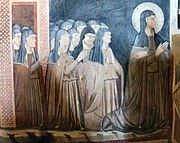
Clare Sciffi was born in Assisi to a rich family. On Palm Sunday, 20 March 1212 Clare left her house, after refusing offers of an advantageous marriage. She had been inspired by hearing St Francis the founder of the Franciscan Monks who was also from Assisi. St Francis facilitated her transfer to Benedictine Nunneries. Her sisters followed her, one renamed Agnes became an Abbess and eventually a saint in her own right. Her family tried repeatedly to take her back into secular life. Eventually, they gave in – apparently when they saw that she had cut her flowing locks off and donned a plain robe.
A small nunnery was set up for them next to the church of San Damiano. More women joined, and they became known as the “Poor Ladies of San Damiano”. They undertook to live impoverished, and secluded.
The Franciscan friars were an itinerant order where the Friars preached to the people and were supported by begging. But this was not possible for women at that time so they lived a simple life of labour and prayer.:
‘The nuns went barefoot, slept on the ground, ate no meat, and observed almost complete silence.’ Wikipedia
Here is a site that gives information about the new Museum that will be established on the site of the Poor Clares. It also gives an outline history of the site.
The following link explores the illustrious noble women who choose to be buried in the Minories. It shows how important the Poor Clares were considered to be. It was dissolved by Henry VIII in 1539.
To read about the nearby Roman Bastion at Crosswall see my post here:
